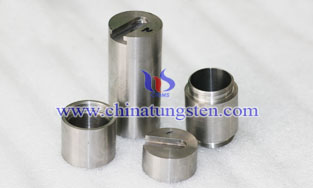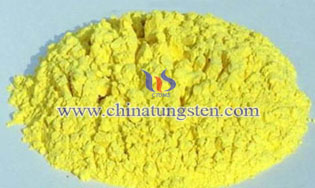Deep-Sea Mining for Minerals Like Tungsten and Molybdenum Triggers Debate
- Details
- Category: Tungsten's News
- Published on Thursday, 12 September 2019 08:20
- Hits: 679
Huge reserves of precious metals such as tungsten and molybdenum embedded in the tops and slopes of the seamounts and sea platforms from 800 to 2,500 meters. The deep-sea mining could solve mineral shortages, meantime brings a new ocean threat - affecting the ecosystem and biodiversity in ways scientists say they don't yet fully understand.
In July of this year, the International Seabed Authority (ISA) held its second convention of the 25th session at its headquarters in Kingston, Jamaica. Representatives from more than 170 countries discussed the future agenda of global deep-sea mineral development. Outside the venue, more than a dozen environmental volunteers held a yellow slogan, "No deep-sea mining". The peaceful demonstration lasted for half a day and did not disturb local traffic and security.
Precious metals embedded in the ocean floor that could be used for electronics. So far companies haven't been willing to heavily invest in such a difficult and costly undertaking, but the recent combination of advances in underwater-mining technologies and steep increases in the value of gold and other precious metals like tungsten and molybdenum has triggered an aggressive push to mine the deep ocean floor. 26 permits have now been issued by international authorities and countries around the world to begin preparations for undersea mining, focused mostly in the Pacific Ocean.

In the view of some environmental experts, deep-sea mining may irreparably harm ocean ecosystems, increasing climate change and affecting the food safety of billions of people around the world before we even have a chance to fully study its impacts. They believe that the ISA and its leading negotiations precisely reflect the problem of fragmentation management in the international seas, which is putting the health of the global ocean at risk.
There are three main types of mineral resources in the deep seabed, namely polymetallic nodules, polymetallic sulfides, and cobalt-rich ferromanganese crusts. Among them, polymetallic nodules are distributed at the bottom of the ocean at a depth of 4,000 to 6,000 meters, containing manganese, nickel, iron, cobalt, copper and other rich metal elements. By the end of the 1990s, the latter two mineral resources were discovered one after another. Polymetallic sulfides are formed around the "black chimney" with volcanic activity at the depth of 1000 to 4000 meters, rich in copper, zinc, lead, and precious metals such as gold and silver. Cobalt-rich crusts are mainly produced on the tops and slopes of seamounts and sea platforms with water depths of 800 to 2,500 meters. Besides cobalt and iron and manganese. There are precious metals such as platinum and rare earth elements such as titanium, tungsten, and molybdenum in it.
Regulations for deep-sea mining for precious minerals like tungsten and molybdenum have been discussed for several years, but when the commercialization process of mining the ocean floor is still unknown. Several experts and members of the delegation said that the current discussions have been slow due to the inability to reconcile the interests of all parties. This means that the possibility of the development of ISA 2020 regulations is very low, which may be good news for environmentalists. At least temporarily delay the massive damage to the seabed.
- Tungsten Manufacturer & Supplier, Chinatungsten Online: www.chinatungsten.com
- Tungsten News & Prices of China Tungsten Industry Association: www.ctia.com.cn
- Molybdenum News & Price: news.molybdenum.com.cn
- Tel.: 86 592 5129696; Fax: 86 592 5129797; Email: sales@chinatungsten.com








 sales@chinatungsten.com
sales@chinatungsten.com